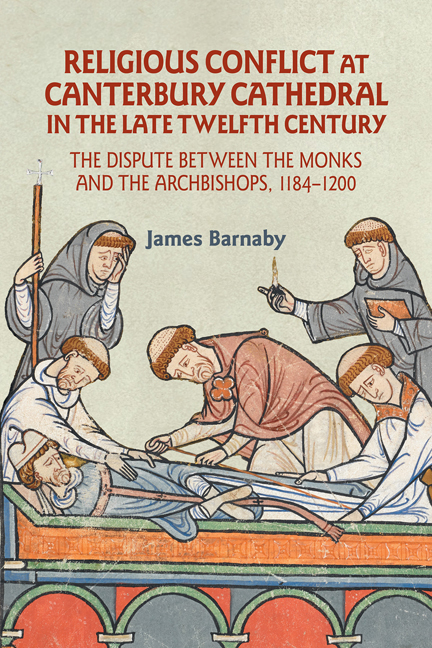 Religious Conflict at Canterbury Cathedral in the Late Twelfth Century
Religious Conflict at Canterbury Cathedral in the Late Twelfth Century Published online by Cambridge University Press: 09 May 2024
By September 1189, the monks’ situation was starting to look better. The siege of the convent was over, the incumbent pope looked favourably on their cause, and the death of Henry II meant that Baldwin had lost one of his chief supporters. The new king, Richard I, appeared more interested in his crusade than helping the archbishop in his conflict with his cathedral chapter. Yet Baldwin's position was not as weak as the monks may have hoped. His own crusading vows meant that Richard was more likely to side with the archbishop than the monks, especially as he came to see the Canterbury dispute as an obstacle to the crusade's departure. Furthermore, the monks were to discover that the papal legate – specifically appointed to settle the conflict – was forbidden by the king from entering the kingdom. The convent understood their struggle was not over.
On 3 September 1189, eight Canterbury monks were standing in Westminster Abbey, witnesses to the coronation of King Richard I. Roger of Howden provides us with the first detailed account of an English coronation. According to this report, the ceremony began with a procession into the church: ‘First came the clergy in their robes, carrying holy water, and the cross, tapers, and censers. Next came the priors, then the abbots, and then the bishops.’ This procession included Archbishop Baldwin, who presided over the coronation. It is unclear if the Canterbury monks were also included in the procession although as the archbishop was representing Canterbury, it is likely that the monks were included in the ‘great number of earls, barons, knights, and others, both clergy and laity’ who followed the king into the church and took up positions in the choir. Apart from Richard himself, Baldwin was the key figure at the coronation. The right to crown the king of England was a jealously guarded right of the archbishops of Canterbury. Indeed, it was the coronation of Henry the Young King in June 1170 by the archbishop of York that precipitated Becket's capitulation to Henry II, with the agreement that the Young King would be recrowned by Becket to prevent the archbishop of York's coronation from setting a precedent.
To save this book to your Kindle, first ensure [email protected] is added to your Approved Personal Document E-mail List under your Personal Document Settings on the Manage Your Content and Devices page of your Amazon account. Then enter the ‘name’ part of your Kindle email address below. Find out more about saving to your Kindle.
Note you can select to save to either the @free.kindle.com or @kindle.com variations. ‘@free.kindle.com’ emails are free but can only be saved to your device when it is connected to wi-fi. ‘@kindle.com’ emails can be delivered even when you are not connected to wi-fi, but note that service fees apply.
Find out more about the Kindle Personal Document Service.
To save content items to your account, please confirm that you agree to abide by our usage policies. If this is the first time you use this feature, you will be asked to authorise Cambridge Core to connect with your account. Find out more about saving content to Dropbox.
To save content items to your account, please confirm that you agree to abide by our usage policies. If this is the first time you use this feature, you will be asked to authorise Cambridge Core to connect with your account. Find out more about saving content to Google Drive.